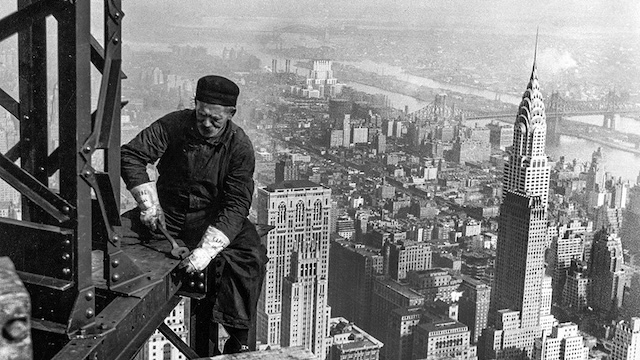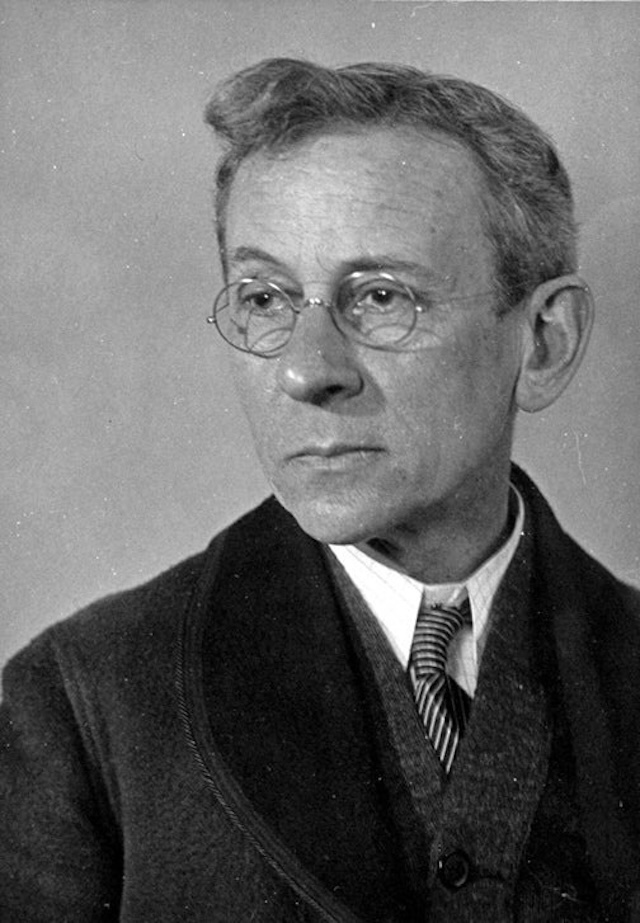In 1931, photographer Lewis Hine captured a breathtaking moment atop the Empire State Building, immortalizing a daring construction worker balancing high above the city in his iconic photo, “Icarus Atop the Empire State Building.” This powerful image not only showcases the courage of these workers but also draws parallels to the myth of Icarus, symbolizing human ambition and the fine line between triumph and danger. The photograph continues to inspire admiration and reflection on the risks taken to build New York’s skyline.
Introduction: Capturing History Through a Lens
In the early 20th century, Lewis Hine emerged as one of the most significant photographers of social change. His iconic series capturing the construction of the Empire State Building provided a visual narrative of the people who worked tirelessly to build New York’s skyline. Among these photos, the image known as “Icarus Atop the Empire State Building” is one of the most profound, blending the physical risks taken by workers with deeper mythological and symbolic meanings.

Hine’s photographs were not just snapshots of construction sites; they were reflections of human ambition, strength, and courage. In an era of rapid industrialization and technological advancement, these workers embodied the American drive to build bigger and better. With his lens, Hine captured the human side of this technological progress, bringing to light the individuals who made these monumental projects possible.

The Story Behind “Icarus”
The photograph, known as “Icarus Atop the Empire State Building”, earned its title from the famous Greek myth of Icarus, a boy who flew too close to the sun with wings made of wax and feathers. In the myth, Icarus’s ambition and disregard for warnings led to his tragic fall. Lewis Hine‘s photograph evokes this mythology, reflecting the ambition of the construction workers, balancing perilously above the city as they built one of the tallest structures in the world.
In the image, the worker appears almost weightless, suspended in mid-air with only the thin beam supporting him. His figure is isolated against the backdrop of the sprawling city below, giving the impression of floating above the world. This connects directly to the Icarus myth, as it represents human ambition soaring to new heights while acknowledging the risks and dangers associated with such grand endeavors.
The naming of this photograph brings forth the idea that while humankind can achieve great things, there is always the potential for overreaching. The connection to Icarus reminds viewers of the fragile balance between achievement and danger, a balance the worker in the image navigates with ease but inherent peril.

Artistic Brilliance and Composition
Lewis Hine’s composition of “Icarus Atop the Empire State Building” speaks volumes not only about the technical expertise required to capture such an image but also the sheer artistic brilliance behind it. The worker’s body is perfectly framed against a seemingly endless backdrop, highlighting his vulnerability amidst the massive industrialization beneath him. The subtle loop of the cable he holds adds fluidity and movement to the otherwise still and stoic image.
The photograph’s composition isolates the worker in a way that emphasizes his courage and resilience. With nothing more than a steel beam and some rope supporting him, the worker seems to defy gravity. His nonchalant posture in such a dangerous position reveals both his confidence and the harsh reality of working conditions at the time. The workers who constructed the Empire State Building often labored in unsafe conditions, with no harnesses or modern-day safety equipment. Hine’s photograph captures both the bravery and the danger of the job.
Additionally, the perspective of the photograph—the angle from which Hine captures the worker—magnifies the sense of height and scale, making the viewer feel the immense distance between the worker and the ground. The vast cityscape below stretches out like a sprawling blanket, reminding us of the enormity of the worker’s task and the heights of human ambition during this era.

The Legacy of Lewis Hine’s Work
Lewis Hine’s work documenting the construction of the Empire State Building stands as one of the most iconic series in American photography. While the building itself became a symbol of the American dream and industrial might, Hine’s photographs revealed the people behind that symbol—the unsung heroes who put their lives on the line to create these architectural marvels.
“Icarus Atop the Empire State Building” has since become more than just a photograph. It’s a cultural artifact representing the dualities of human achievement: ambition and risk, glory and danger. It continues to inspire, reminding us of the audacity it took to build New York City’s skyline and the sacrifice of the workers who made it possible.

Hine’s legacy as a social documentarian extends far beyond his work on the Empire State Building. His photographs of child labor in factories and mills helped spur labor reform in the United States, and his images of immigrants arriving at Ellis Island gave a face to the American dream. In each of these works, Hine’s focus was always on the humanity of his subjects, and “Icarus” is no exception.
The photographer’s relevance endures today, not only for its historical significance but also for the universal themes it touches upon—human courage, ambition, and the fine line between success and tragedy. In many ways, “Icarus Atop the Empire State Building” serves as a testament to the resilience and determination of workers who pushed the limits of what was thought possible, while simultaneously reminding us of the dangers inherent in pushing those boundaries too far.

Conclusion: A Timeless Symbol of Human Ambition
“Icarus Atop the Empire State Building” is more than just a striking photograph—it is a symbol of human ambition, courage, and the ever-present risks that come with progress. Lewis Hine’s masterful composition, combined with the mythological reference to Icarus, transforms this image into a narrative about humanity’s constant drive to achieve greatness, even in the face of danger.
Today, the photograph remains a powerful reminder of the men who risked everything to build iconic landmarks like the Empire State Building and the delicate balance between ambition and caution. Hine’s photograph continues to inspire us to reflect on the immense progress of the early 20th century while appreciating the individuals who made it possible.


